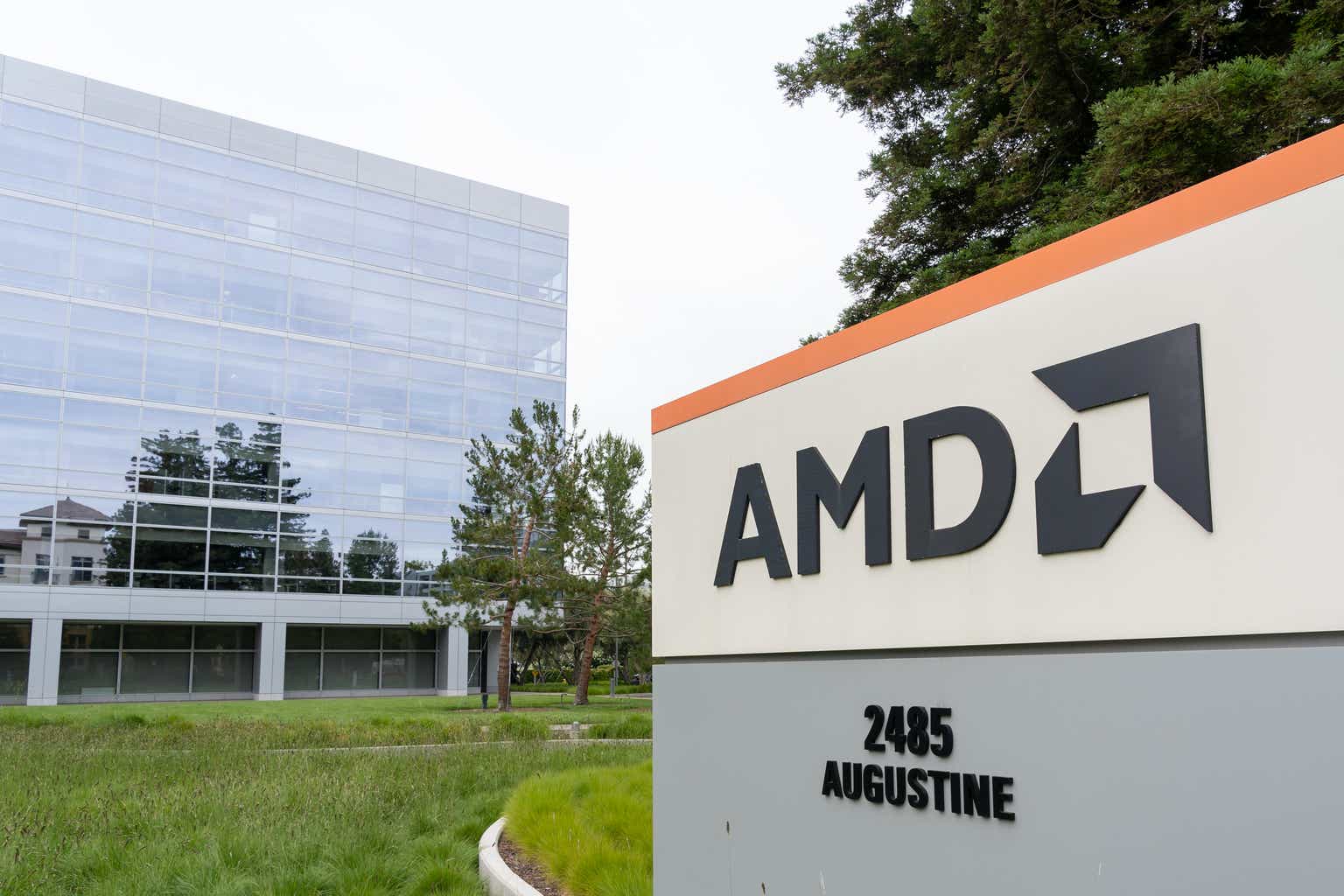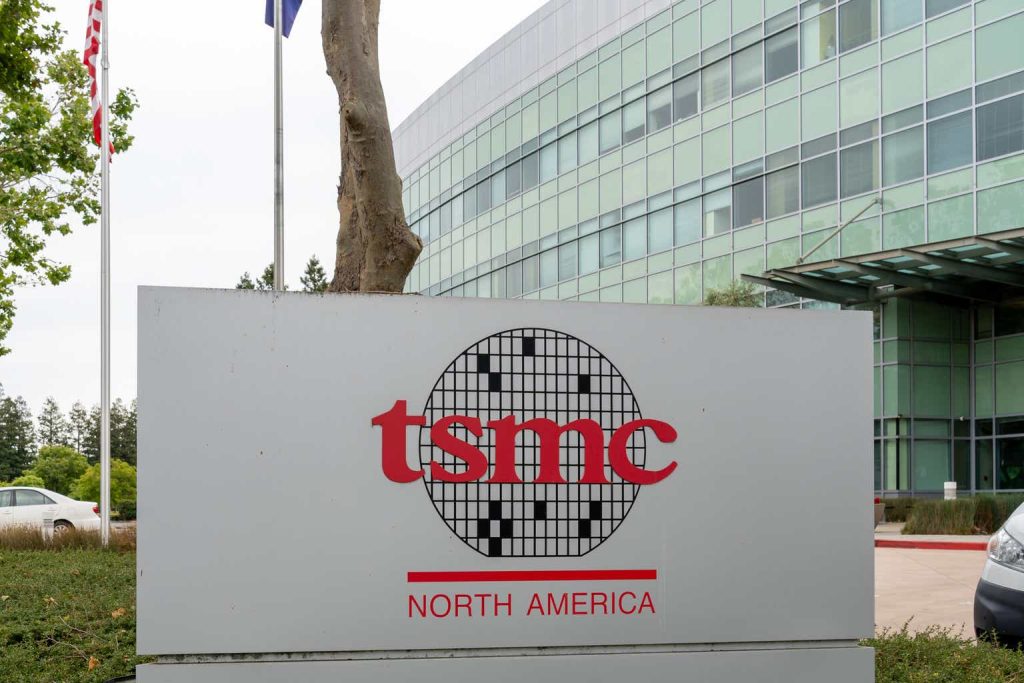Investment Thesis
Advanced Micro Devices, Inc. (NASDAQ:AMD) remains one of the most compelling alternative investments for AI chips besides Nvidia (NVDA). However, what has prevented a bullish rating on the stock has been its very high valuation, which rivals that of Nvidia despite only delivering a fraction of its growth.
Recently, the share price has cooled off a bit after reaching over $200. While the valuation remains quite unfavorable, there are arguably several tailwinds on the horizon that might warrant a tentative upgrade.
Overall, the thesis is neutral to even bearish in the near-term based on valuation concerns, but upgraded to bullish in the long term. An explicit downgrade/recommendation to be bearish would in any case not be considered, as the stock has historically remained strongly valued.
Background
From previous coverage in February, it was noted that AMD’s valuation seemed years ahead of actual performance. This was contrary to the actual leader in AI, Nvidia, whose stock’s valuation never became all that expensive given the strong growth (which it allowed it to quickly grow into the valuation). For AMD, such strong growth was lacking in the first place (or from a minimal base at best).
Q1 results
AMD has been delivering mixed results since Q1 2023. With Q1 revenue of $5.5B, the 2% revenue growth means overall revenue has remained stalled since Q1 2021, when it delivered $5.9B following the Xilinx acquisition. AMD indeed has yet to top the $6.5B it posted a quarter later. Back in 2021, the stock nevertheless did actually continue to rally late into the year, and currently it remains at a similar level. This indicates investors remained quite bullish about further growth throughout this period, despite this not having happened, with instead a major downturn in late 2022.
Looking more closely at the results, data center revenue hit a record $2.3B, up 80% YoY, driven by both Ryzen and Instinct product lines. It was up 2% QoQ due to Instinct growth despite a seasonal Epyc decline. Client has continued its recovery from the downturn, which was down by around 50% at its lowest, and increased 85% YoY.
The two segments mainly responsible for the overall flattish result were Gaming, which at $0.9B revenue was down 48%, and Embedded, which with a $0.8B result was down 46% YoY and 20% QoQ.
Regarding profitability, non-GAAP EPS was $0.62 with a 52% gross and 21% operating margin. However, GAAP gross margin was 47%, and GAAP operating margin was 1% for $0.07 EPS.
Outlook
AMD expects $5.7B revenue in Q2, delivering a slightly stronger 6% YoY growth. So, similar to Intel (INTC), it seems most of the growth is expected in the second half.
Business updates
After announcing an initial outlook for $2B AI revenue in 2024, this was a subsequently increased to $3.5B. This strong increase led to speculation about what the actual result would be, which implied a large range of possibilities. To that end, AMD seemingly debunked some of the more bullish ones, which were trending in the high single digit billions, with a Q1 update that was merely $0.5B higher at $4B.
AMD did announce recently it would move to an annual cadence, following Nvidia’s similar announcement.
Upside potential and valuation
With a 45x forward P/E (according to the Seeking Alpha page), and as noted a large (20-point) difference between GAAP and non-GAAP earnings, the stock is expensive. Nevertheless, looking at some of the potential upside factors does suggest a tentative upgrade may be in order.
First, as noted, AMD continues to see weakness in two of its major businesses, gaming and embedded. If market conditions improve, then a combined quarterly upside of $1.5B may be possible, or $6B annually. Further, even clients continue to be down from the closer to $2B quarterly revenue before the downturn.
Secondly, the Instinct ramp, despite marking a record time in hitting $1B (cumulative) revenue, remains in its early innings. It seems likely this business could double (or more) over time from the $4B currently forecast for 2024.
Overall, in a bullish case, this suggests revenue could rise to around $36B: $8-10B Instinct, $6-8B Epyc, $6-9B Ryzen (client), $6-8B gaming and $5-6B embedded. The range resulting from these estimates is $31-41B. Looking at Nvidia, it seems most of the potential upside resides in the Instinct line.
Aside from the new AI accelerator business it is entering, this projection does not necessarily require a lot of market share increases (perhaps except for Gaming, where it has ceded some further share to Nvidia), and could be achieved mainly through modest total addressable market (“TAM”) increases. For example, in the Client segment, the new AI PC trend may lift ASPs, and in the data center area, Intel (INTC) is forecasting that the price per core will remain quite stable, with increases in core count boosting ASPs over time.
Assuming a 25% operating margin, $9B in (non-GAAP) net income might be achieved. This translates to a bit over $5.5 EPS and 29x forward P/E. Operating margin expansion to 30%, which it has achieved before in its record quarter of Q2 2022, would further reduce the multiple to 24x. Since the AI accelerator business is clearly a very high margin one, perhaps (or even quite likely) even further operating leverage might be possible.
Such a lower-20s multiple would align quite closely with its bullish-case growth profile. Or, since the stock’s multiple is already much higher, would allow for some decompression in multiple while nevertheless allowing for shareholder upside. Given the stock’s historical quite high valuation, the latter case seems more probable.
Risks
The main risk is that the bullish case, which assumed continued accelerator growth and a complete recovery in the other businesses, does not materialize.
For example, PC revenue at the time was boosted by the COVID-19 cycle, while the PC TAM has since reverted to more historical levels. Combined with Intel’s increased competitiveness, which implies major market share growth seems unlikely, most of the growth opportunity may hence already have been realized with Q1’s 85% YoY growth. Nevertheless, some bulls may note that AMD’s quite low market share, which has indeed remained in the low 20s at best, remains a long-term growth opportunity.
Similarly, in the data center arena, Intel continues to improve its competitiveness strongly, aiming to take back market share instead with its latest 2024 product launches. In embedded, there is currently an inventory digestion, which implies that some (QoQ) growth should return quite soon. On the other hand, the digestion has partly been caused by oversupply, so again a full recovery in revenue may not happen soon if at all, if those peak sales numbers were based on (caused by) oversupplying the market.
Lastly, even after using bullish-case numbers for all businesses, as noted, even then, the non-GAAP (never mind GAAP) P/E multiple would remain above the S&P500 average. In the case of around $8B or even higher AI revenue, this business would still represent only a fraction of its total revenue, so even if at that size it would continue to grow quickly, it might not cause the company’s overall growth rate to be sufficient to warrant an elevated valuation like it currently has.
Overall, a multiple in the low 20s seem realistic for a company like AMD. Hence, in the worst-case, this puts about half of its share price and market cap at risk given the current financials, so indeed the valuation seems to price in years of further growth.
In previous coverage, the valuation was compared to ASML (ASML). However, there is a substantial difference in quality and position of both companies, as ASML is the only provider of EUV lithography equipment, whereas AMD remains the smaller competitor in most of its businesses.
Since AMD is a fabless company, it does not have much if any risk regarding capex spending to sustain its business. This compares for example to Intel, whose heavy capex spending to build new fabs has been weighing substantially on its FCF recently.
Investor Takeaway
Realistically, the stock should be uninvestable, with about half the market cap and stock price at risk given the current financials. Nevertheless, since many of AMD’s businesses remain quite far below their achieved peak revenue, even near their trough in embedded and gaming, this creates an investment opportunity ahead of a return to growth as these businesses recover. In addition, long-term investor sentiment regarding the stock has been strong, so given the AI hype may be unlikely to cool down substantially. However, this investment opportunity, to be sure still remains constrained by the elevated valuation (which even if it does not substantially decrease, seems unlikely to increase further either), even after the reduction in share price in the last few months.
Notably, in a bullish scenario of a complete recovery combined with continued AI growth, revenue could grow to $36B or higher in the years ahead, up from $24B estimated for 2024. Combined with an increase in operating margin this might result in, at the current share price, this would reduce the P/E multiple towards the low-20s.
Depending on one’s view, this is either an investment opportunity, or a confirmation of prior coverage which concluded that years of growth was already priced in, as contrary to Nvidia, AMD had and has yet to really ramp its accelerator revenue to substantial levels.
As such, the tentative buy upgrade for Advanced Micro Devices, Inc. shares is rather based on investors’ general bullish outlook on the stock over time, which for years has resulted in an above-average valuation, even during the recent downturn. Hence, if AMD does return to double-digit growth later this year and beyond, the valuation multiple might not decrease much if at all, resulting in potential shareholder returns over time.
Read the full article here



